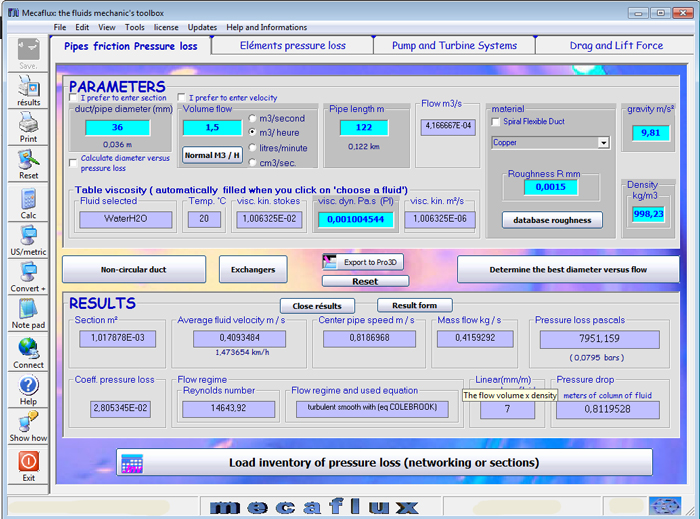The major head losse or pressure drop represent energy losses due to friction of the fluid in a conduit of constant section. They are expressed in fluid heights (in meters) and pascals.
DH is the pressure drop of major head loss in meter column fluid
l is the major head loss coefficient

- V is the average flow velocity
- D is the diameter of the flow
- L is the length of the flow (pipe length)
- g is graity (9.81)
See also: Sizing a hydraulic line or aeraulic according to its flow
Here is an example of how to calculate major head loss with software mecaflux:To calculate the energy losses, certain information is required, enter the information in the "Parameters area"
- Pipe diameter (or equivalent diameter if the cross section is not round) mm.
- Flow in the selected unit.
- Length of the pipe in meters
- Select a fluid And in the viscosity chart , select a température
- Select a pipe material
- You may be offered a choice of two equations, the results are similar, but you can compare different methods of calculation.
- You may be offered a choice between two flow regimes when you are close to the limits of transition between laminar and turbulent flow.. This transition is often brought into reality by defects in roughness. (if you restart the calculation by slightly modifying the roughness you switch to a regime or another)
- the pressure drops are given in fluid heights (in meters) and pascals.
- the section of the conduit in m²
- the average fluid velocity in ms
- the maximum flow velocity in ms
- the coefficient of head loss (dimensionless coefficient )
- flow type
- Equation used
- Reynolds number
See also: Sizing a hydraulic line or aeraulic according to its flow

